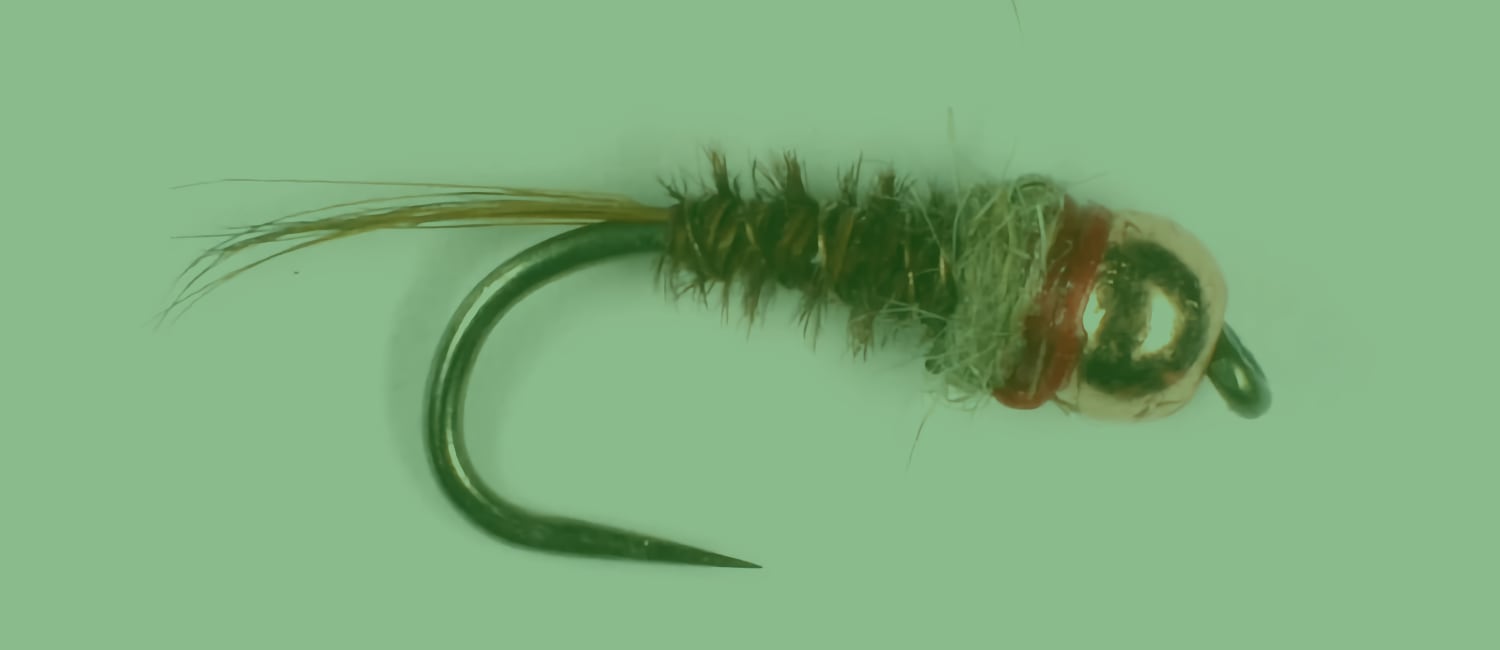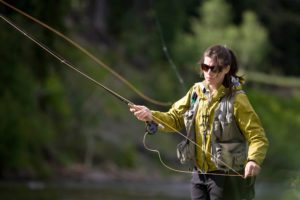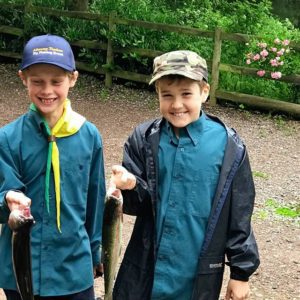We Fly Fish Pro Selections
We Fly Fish has put together two sets of essential flies to use in chalkstream and stillwater fly fishing. These selections are designed to provide a range of proven flies to cover a wide variety of fishing conditions through the fishing year.
Barbed hooks cause more damage when removed from fish (or anglers and their clothing) and are unsuitable for catch and release fishing. Crushing barbs with forceps are no longer acceptable at a growing number of fisheries, flies need to be born barbless. Even at stocked fisheries with a mandatory catch and keep policy we use barbless flies for safety reasons. When fishing catch and release very often the flies fall out when the fish is netted and the line goes slack. This means the release can be made with no contact with the fish in the net, and without removing the fish from the water.
We Fly Fish Pro Chalkstream Selection
Trout and grayling food. Contents of a typical kick sample from the bed of the River Kennet chalk stream, Avington Estate. Shrimps and blue winged olive nymphs are plentiful in this reach.

1) Sawyer’s Killer Bug
Sawyer’s Killer Bug which was developed in the 1930s by legendary River Avon keeper Frank Sawyer for targeting grayling. In smaller sizes it imitates or ‘suggests’ the freshwater shrimp. In the last century grayling were killed as they were seen as pests that competed with trout for food and habitat, now they are recognised as a fine wild sport fish and usually released. Sawyer’s Killer Bug pattern is a good example of a suggestive pattern. Not a photorealistic imitation but highly effective. It is surprising how often a vague impression of a fly can be more effective than a closer replica. Originally, the fly was tied with Chadwick 477 wool (used by his wife to darn wool socks). Production of this legendary yarn was discontinued in the 1960s but samples of original ‘477’ can fetch astronomical prices on eBay. Modern substitutes are available.
Commonly referred to as a shrimp, they are freshwater amphipods. Gammarus are a useful water quality indicator species due to their requirement of oxygen rich water and are abundant in chalkstreams as long as conditions are good. Gammarus hatch fully developed from eggs and are able to reproduce rapidly, producing two generations in a year.
Gammarus are prolific in chalkstreams and a good choice to imitate all year round if fish aren’t rising, taking both brown trout and grayling.
Gammarus can get infected by a parasite (Pomphorynchus) which induces single or multiple orange spots (easily visible to the human eye) in their bodies and behavioural differences in their hosts. These changes increase the chances of their hosts being eaten by a fish, completing the life cycle of the parasite.
The parasite takes advantage of a biological principle called oddity selection, which explains why predators will target prey which look different to other food items. This phenomenon was described in 1959 when predatory goshawks were observed preferentially selecting prey pigeons which differ in colour from their flock.
Some fly patterns (like the following one) use this principle, adding brightly coloured beads or other flashes of colour to otherwise drab looking, neutrally coloured patterns.
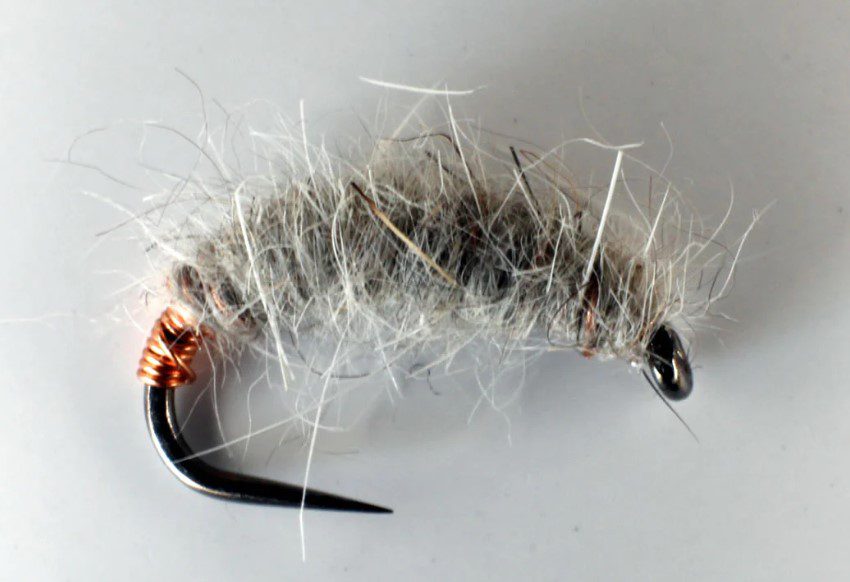
2) Orange-Head Mary
This fly is similar in silhouette to the nymph of a small upwinged fly such as the Large Dark Olive Baëtis rhodani or Blue Winged Olive Serratella ignita. These nymphs do not naturally have fluorescent orange heads of course, but even so this pattern is very effective. This is another example of oddity selection described above.
Sight fishing a nymph in a chalkstream effectively means positioning the nymph within easy reach of the trout or grayling as the current moves the nymph into their feeding zone. High visibility beads help the angler to spot the location of even a small size 18 fly and manage the drift to align it with the target fish. If you can’t see the nymph then you are guessing whether it is in the feeding zone of the fish. Even though the bead colour is unnatural, the shape and size of the body are realistic and this fly catches fish.
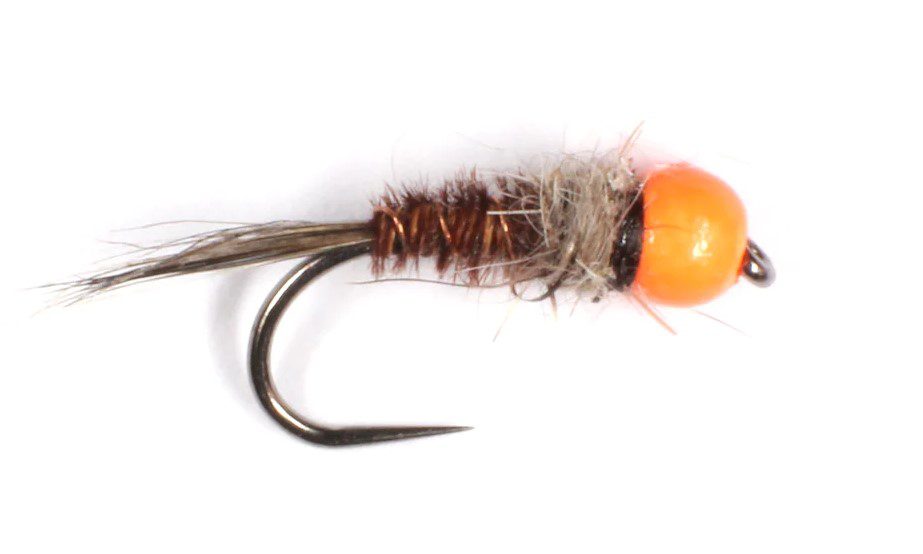
3) Red-Neck Pheasant Tail Tungsten Nymph
This is a modernised version of what is probably the most effective chalk stream nymph ever, the Pheasant Tail Nymph (often referred to as the PTN). This is Frank Sawyer’s most famous creation, pheasant tail feathers and fine copper wire were used to develop a wing case and tail silhouette and provide sufficient weight to sink the nymph in the current down to where the fish lie.
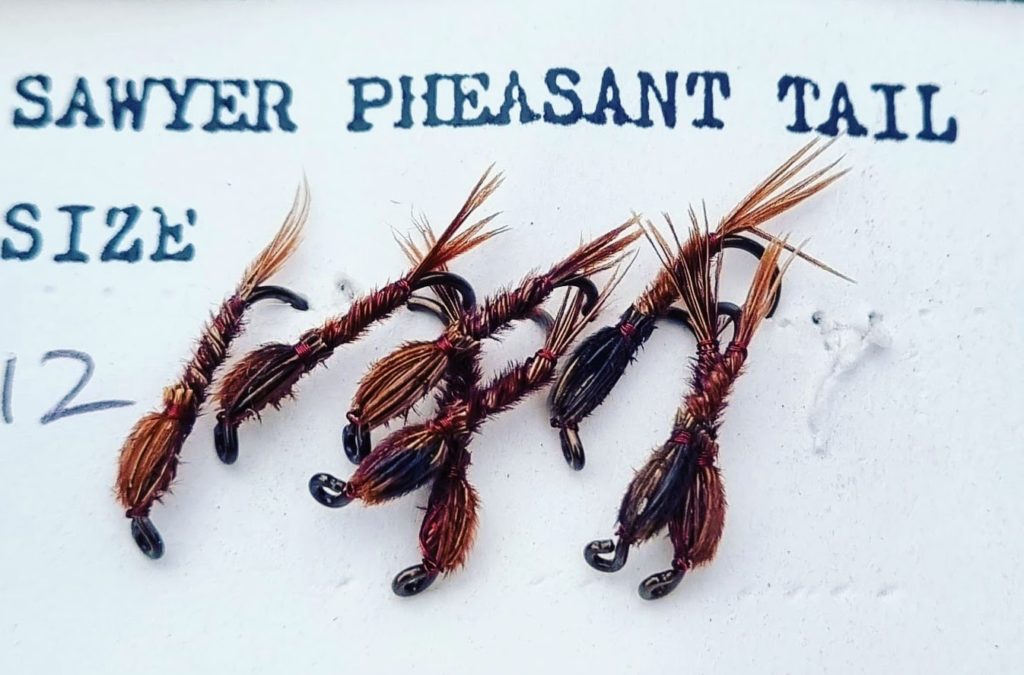
This weighted nymph was used in developing the Netheravon style of nymphing. This pattern does not include the legs of the nymph as Sawyer observed that the nymphs fold them into their bodies when swimming. Designed to be used at the River Avon in Wiltshire, it quickly grew in influence to become world famous. This updated version uses a modern Tungsten bead rather than copper wire.

4) Pink Squirrel 2.0
First developed by John Bethke of Wisconsin in the early 2000s, this is a bright ‘attractor’ nymph, also known as the Persuader. Very popular in the US, the Krystal Flash Tail and pink hotspot make this a great fly for autumn/winter fishing especially for grayling. Trout love it too, so try this early season when the water levels are higher and not much is hatching.
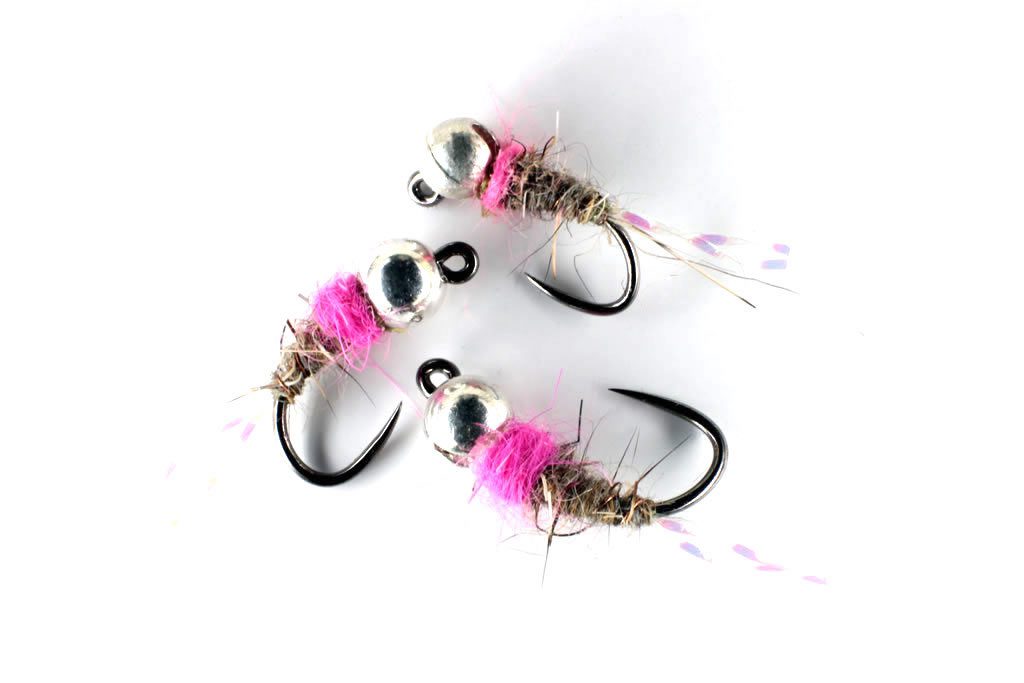
5) Hare’s Ear Tungsten Nymph
Another classic fly: soft and stiffer fur fibres are mixed in the dubbing to make a scruffy, buggy fly. Suggests pretty much any chalkstream invertebrate that is the size of the fly, from a mayfly nymph to a shrimp.
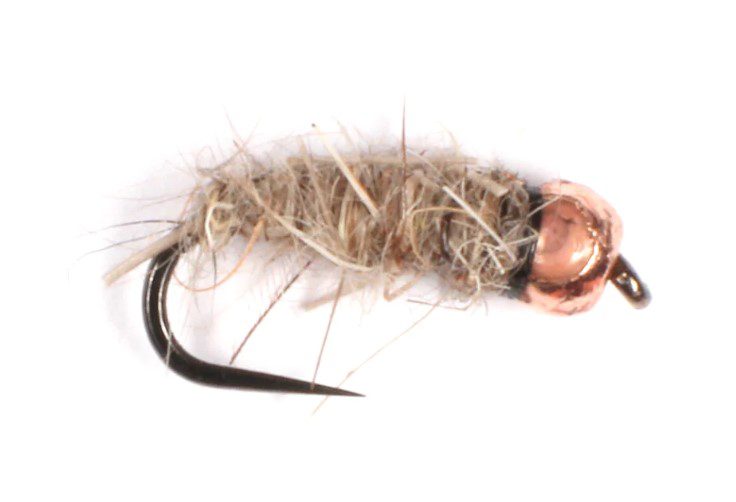
6) Grey Wulff
Adoption of the hairwing patterns that eventually became the Wulff dry fly style began about 100 years ago in the US. Lee Wulff designed a series of three distinctly American patterns. He felt that the English and Catskill style dry flies that were usually used at the time were too skinny for his local rivers and created this robust American style of fly although choosing the English spelling of “Grey” rather than “Grey” when naming it.
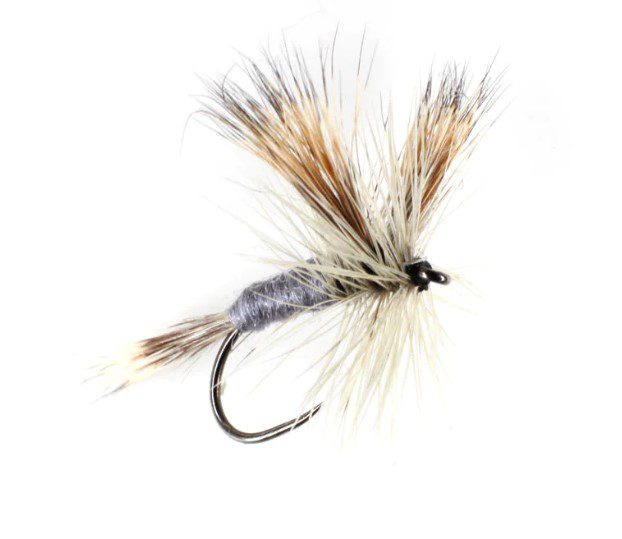
Like the Hare’s Ear this is another example of a classic pattern that is suggestive rather imitative. Good choice during the Mayfly hatch.
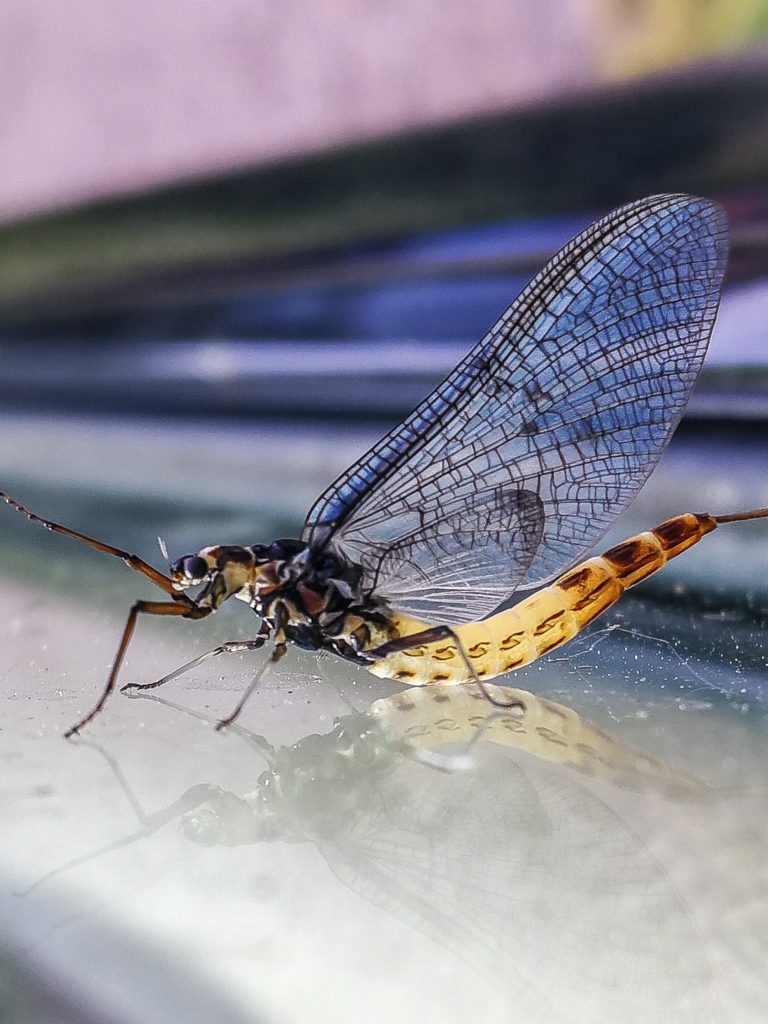
7) Elk Hair CdC
This fly is an adult sedge (caddis) imitation. Adult caddis flies resemble moths, but with their wings folded back along the body. Unlike moths, they have a fine set of hairs on their wings instead of scales. Some of the 199 species of sedge (trichoptera) in the UK have very long antennae.
Depending on the species the larvae are cased or caseless. Cased caddis form a case by sticking together sand, small stones, or organic materials found on the bed – so they blend in well with the bottom. Larvae moult 4 times after hatching from the egg.
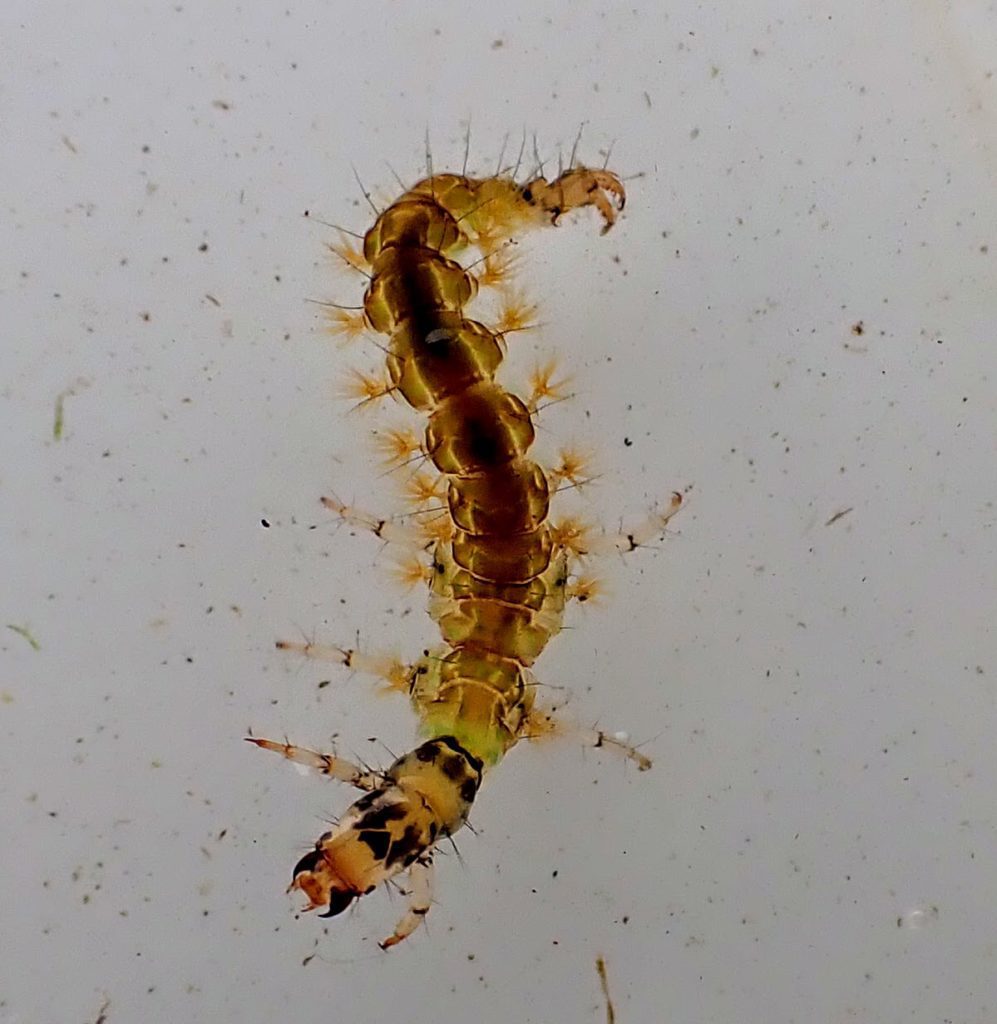
Pupae then hatch into winged adults on the surface or on the shore. After mating the adult females return to the water to lay their eggs on the surface. For the fly fisher, the larva, pupa and adult are of interest as they are chalkstream trout and grayling prey.
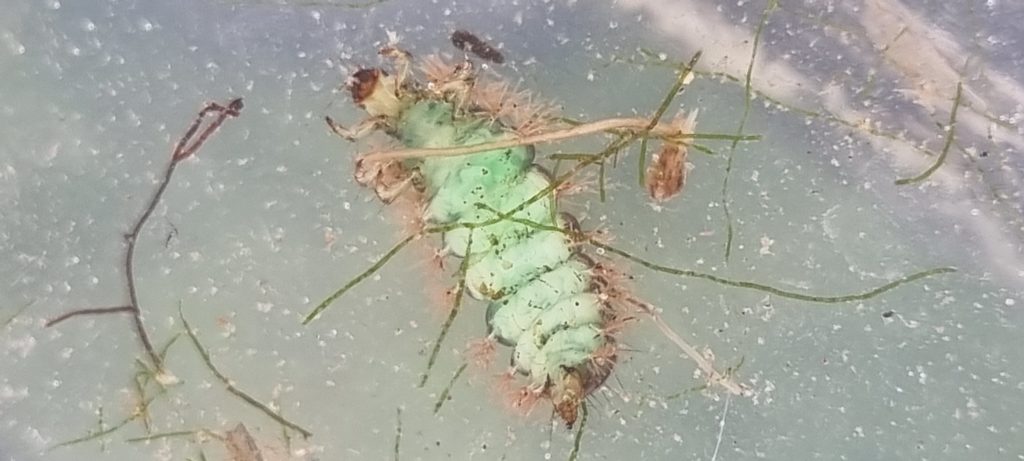
Al Troth designed the original Elk Hair Caddis in the 1950s for the rivers of Pennsylvania to create a high floating dry fly. Elk hair is hollow, making it naturally buoyant. This updated version uses Cul du Canard (CdC), the tiny feathers from a duck’s preen gland, which are naturally waterproof. Caddis flies are fairly good fliers and you’ll see them skitter along the water surface when returning to the water to lay their eggs. Fish static or skate the fly across the surface.
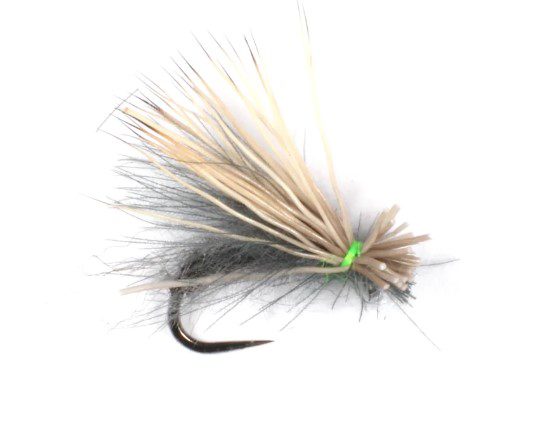
8) Indicator Dinkhamer
Hans Van Klinken originally tied this fly as an emerging caddis pattern to catch grayling as they floated in the surface film and called it the “Klinkhammer”. It successfully imitates other emerging nymphs as well. This fly works so well because the abdomen sinks below the surface and the thorax floats. Tied on a curved hook it imitates the body position of the insect as it hangs in the surface film just as it starts to emerge. This differentiates the Klinkhammer from other parachute dry flies.
When trout and grayling look up at the surface, most of what they see is a ‘mirror’ – the reflection of the bottom. There is a ‘window’ through which they can see through to the world beyond the surface so they can examine flies sitting on the surface (and spot potential predators). This window grows in size the deeper the fish are.
Emerger patterns like the Klinkhammer have their abdomen below the surface which allows the fish to see them (together with a reflection of the underwater portion of the fly) from much further away than surface objects in the ‘window’. This allows them more time to detect the fly and (hopefully) start to ascend in the water for a closer inspection before eating the fly – if all goes well!
To present this fly properly you should be careful to only apply floatant to the post and hackle. Avoid the parts of the fly that are supposed to be sub surface.
Emergers have another attraction to fish. They are an easy meal. At the moment the fly is hatching it is very vulnerable. During the moulting process and getting ready for flight they are easy pickings. Energy used to rise up from their lie on the river bed to take the fly is a good investment compared to prey items that are better placed to make their escape.
So why is this called a Dinkhammer? ‘Klink and dink’ is a highly effective method of fishing on (or in) the surface, and below it at the same time.
Your nymph is supported by the Dinkhammer at a set depth in the water. Rigging the ‘Klink and Dink’ with this fly is easy. Simply tie on the required length of tippet to the tippet rink on the bend of the fly hook, and attach a length of tippet with the nymph on the end.
Tippet length depends on the weight and design of the nymph, the diameter (and therefore drag) of the tippet, current speed (which varies by depth) and how deep you want to fish the nymph. Try 1.25 times the depth in the shallowest part of your drift and experiment from there. Other names for ‘Klink and Dink’ and very similar approaches include: Duo, New Zealand, and Dry Dropper. With each of these you may get a take on the surface fly, or it may move to indicate a take on the nymph suspended below.
Tied with a pink and orange post this fly is easy to see in poor light conditions. Pink and orange together are a classic combination for high visibility. Try using these colours for Dorsey yarn strike indicators; they work really well together.
As well as the Klink and Dink method this fly can be used in tandem with a smaller, less easily visible dry such as the F-fly or Griffith’s Gnat below. If ‘single dry fly only’ is the rule at the time and place you are fishing this is a great choice as a solo fly as well.

9) Griffith’s Sparkle Gnat
This is a great choice for summer fishing where river levels are low, water is clear and the fish are picky. Long leader systems (over 12 foot, if your casting ability and the wind conditions permit) with light tippets are the way to go. Minimise false casting and beware of shadows cast by you or your rod. This fly represents midges or other small summer time aquatic and terrestrial flies.

10) CdC Olive F-Fly
Designed by Slovenian fly fishing expert Marjan Fratnik this is an all-round trout and grayling fly pattern. Fratnik declared that “a fly that needs more than 60 seconds to be tied, is not worth much” and the F fly is certainly the essence of simplicity. With its delta wing silhouette, it can be used to represent many caddis, olives and midge species depending on the size of the fly. Perfect throughout the trout season, especially when there is a hatch of Olives.
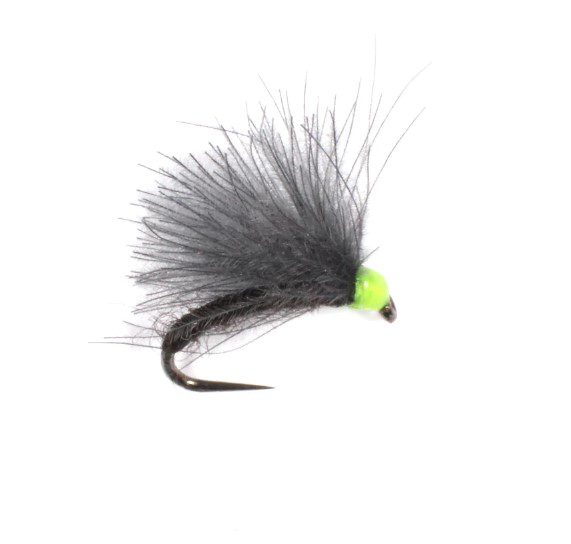
We Fly Fish Pro Stillwater Selection
1) Orange Stalking Bug

This is a fast sinking fly that is ideal for stalking large trout in stillwaters. Really a fly for sight fishing, the smooth dense design (reminiscent of a Perdigon fly used for Euronymphing) allows it to cut quickly through the water column and get down to the level of the trout.
Refraction means they are deeper than they appear, the high visibility tail helps to judge the depth. Large trout often have set patrol routes they follow around the lake. Get your polarised lenses on and watch how the trout are behaving. You can either drop the fly to the bottom and then raise it up when the time is right, or wait for the fish to arrive and drop the fly down to them. Floating lines and a leader of around a rod length make this easier.
Aim to get the fly about a foot in front of them, and give it a few small jiggles with the rod tip to bring the sparkly marabou tail to life
2) Daddyhog
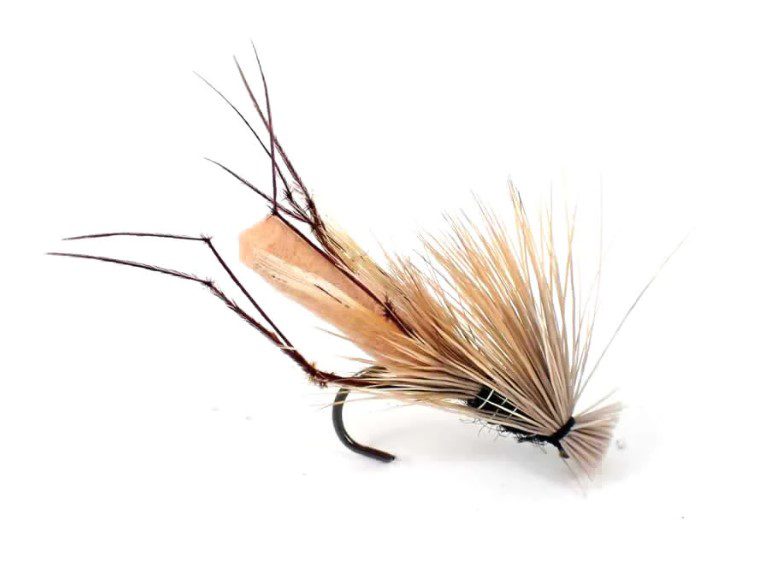
Crane flies (commonly known as Daddy Long Legs) are a terrestrial insect that hatches into the adult fly predominantly in late summer and autumn. Tipulidae are thin, long legged flies that have their hind pair of wings reduced to pin-shaped structures called halteres which act as gyroscopes to maintain balance in flight. Warm wet summers produce large numbers of them. Over 300 species live in the UK, with body lengths from 5 – 30 mm and wingspans of 15 – 65 mm.
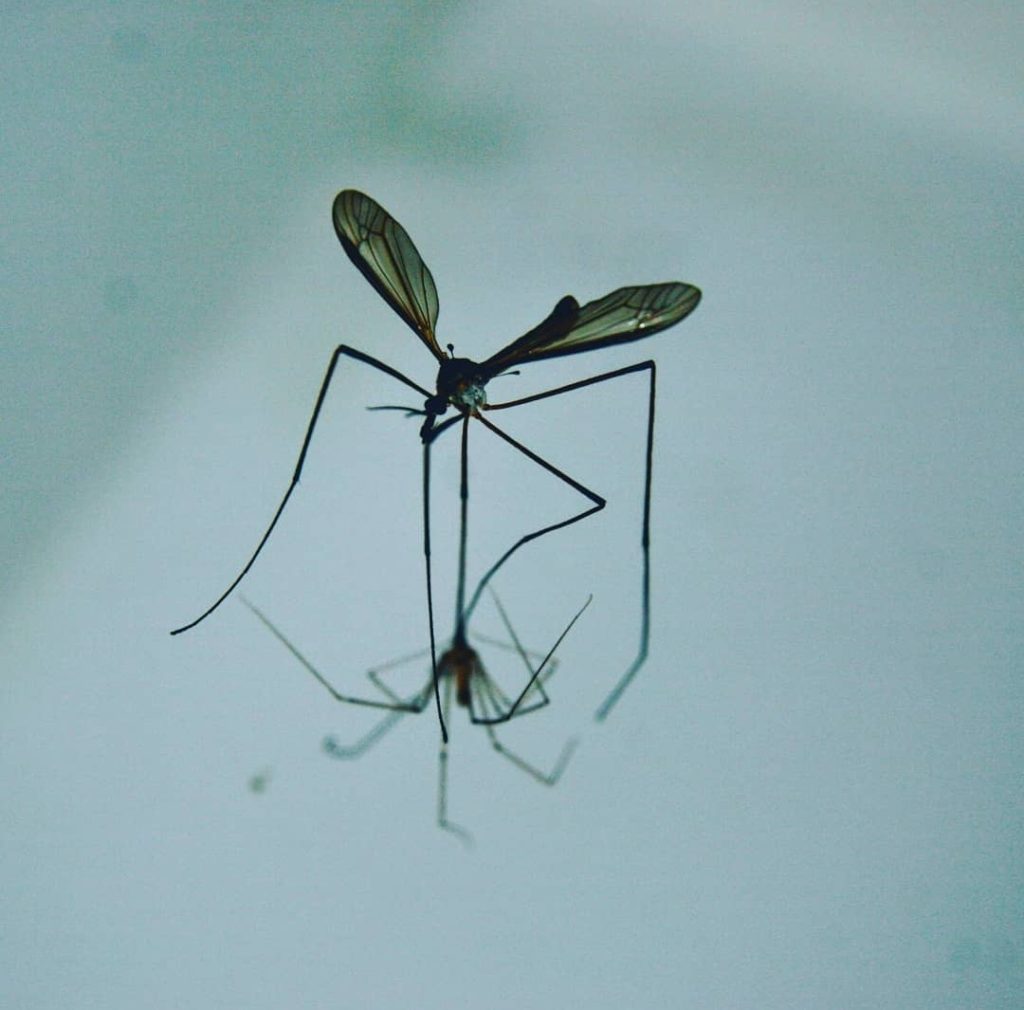
Larval stages live in soil or decaying wood and leaf litter and are of no interest to the fly fisher as the fish can’t get at them. Once hatched the adult crane flies are haphazard fliers which are often blown onto the water where fish will enthusiastically take them. Sometimes the Crane fly fall can be spectacular, producing a feeding frenzy comparable to a Mayfly spinner fall. Peak season is late summer/autumn, and the flies can be fished static in (not on) the surface film, or twitched occasionally.
This version uses a detached foam body, for extra realism, and buoyant elk hair.
3) Parachute Adams
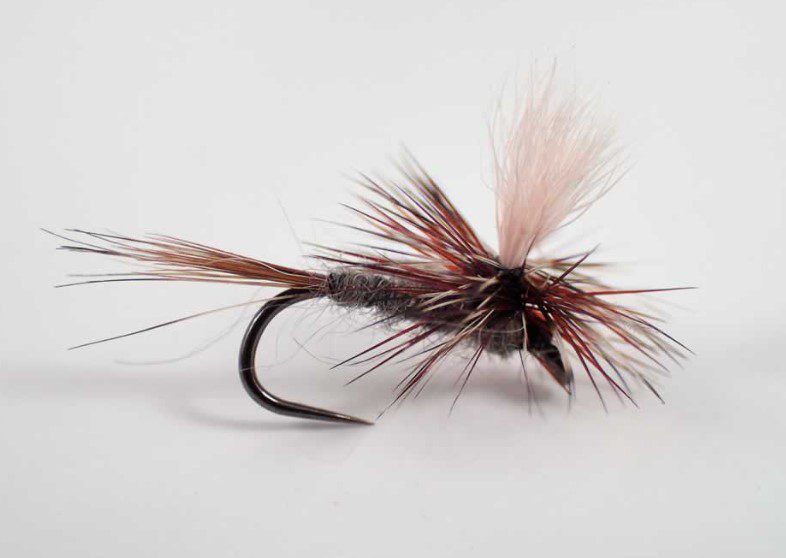
This classic was developed in the 1920s in Michigan, and gives the general impression of a hatching fly, particularly an upwinged fly. As with other patterns, getting the size matched to what is hatching is best, but it can be a good prospecting pattern even if nothing is rising at the time.
“Parachute style” flies have their hackle wrapped horizontally around the base of the post so the fly sits horizontally in the surface film.
4) Epoxy 3D Olive Buzzer
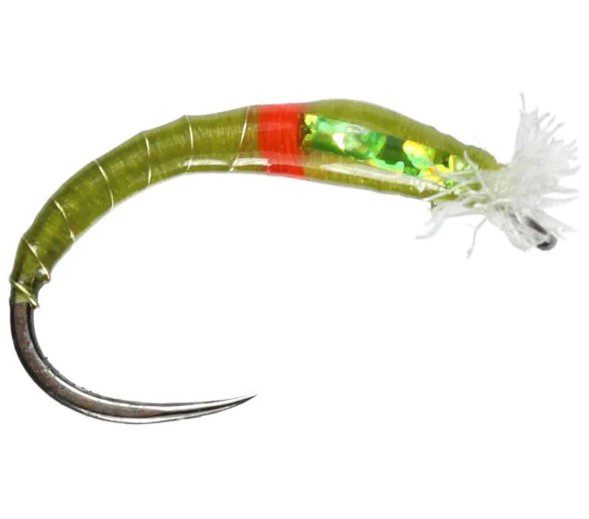
Don’t leave home without buzzers! Hugely important food for trout, these are the pupae of Chironomidae, the non-biting aquatic midge. These flies hatch all year round, you may have seen the buzzers just under the surface of a water butt or pond. Any stillwater can be a habitat for these insects. Bloodworms are the larvae of Chironomid midges which are abundant in both stillwaters and rivers. In stillwaters they can occur at a density of 5,000 larvae per square metre and are highly nutritious for fish, so an important component of the food chain.
When they pupate buzzers rise through the water column to hatch on the surface. They are vulnerable to predation all the way to the surface and especially when hatching. To fish close to the surface use a strike indicator to set the depth, or use mucilin line grease to make a section of the leader float. Buzzers swim with a wriggling motion, not very quickly, so best fished with slow retrieve or let the fly line drift with the wind.
5) Gold Head Olive Dancer
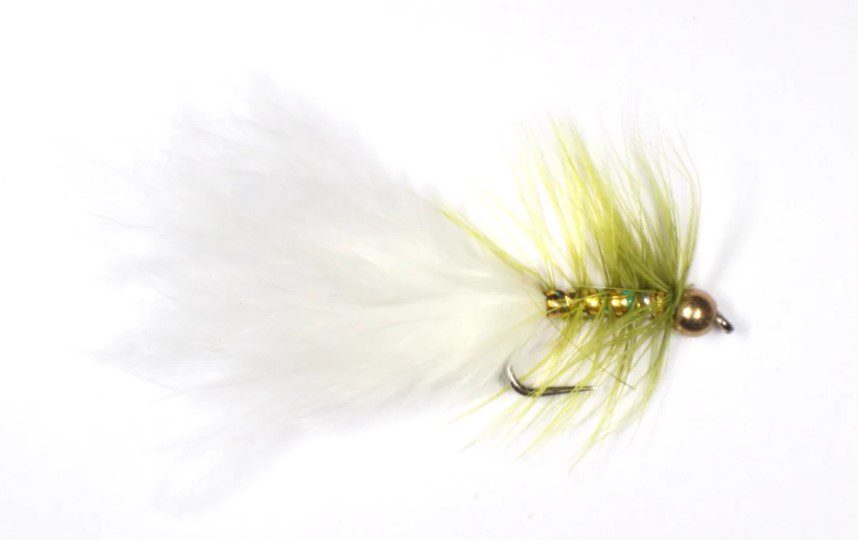
Similar to the world famous Wooly Bugger streamer pattern this is a pattern which triggers predatory instincts of trout. Marabou tail and the weighted bead head produce a very lifelike movement when retrieved with short pauses. Best tied to the tippet with a Rapala Knot or other knot that allows the fly more movement. Can produce exciting sport when they are working. Here’s a streamer caught rainbow stillwater rainbow trout.

If you get a trout following the fly, but not taking it by the end of the retrieve, try to keep an eye on the fish that followed. Re-cast the fly two or three feet in front of it. Often this will produce a frenzied attack. Follow the same approach if the trout attacks the fly and misses, that is almost guaranteed a hook up.
6) Olive Fry Booby

We are getting into the more controversial flies here, and this fly is banned on some UK stillwaters as too effective and ‘unsporting’. It is characterised by two small foam ‘boobies’ at the front of the fly that make it buoyant. These produce a lifelike side to side ‘wobble’ motion as the fly is retrieved.
Fished on a floating line it acts as a surface attractor, but it is more often fished on a sinking line of some sort. This could be a fast, full sinking line, or just a sinking polyleader temporarily attached to a full floating line. Polyleaders can be bought with different densities, so you can choose the sink rate of your detachable ‘sink tip’.
Fished on a sinking line it behaves differently to other streamer type flies. When you pull, it dives down, rising when you stop. This is the opposite to a weighted bead head streamer like the Dancer which rises when you pull, and sinks when you stop.
7) Custard Cream Blob
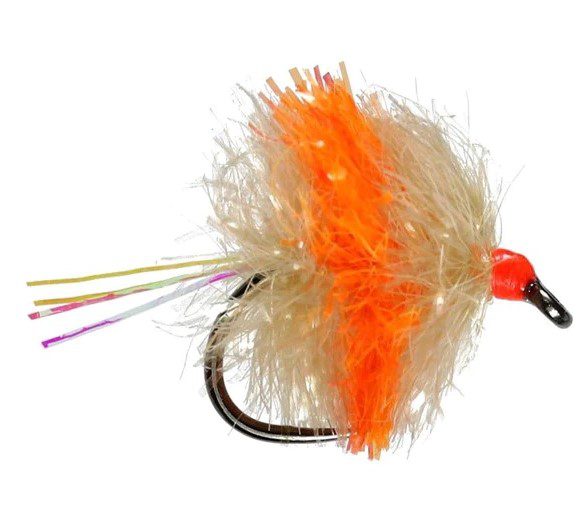
This is a Marmite fly for sure. Fly fishers either love it or hate it. Streamers like the Dancer and Booby bear at least some resemblance to the movements of a small fish, even though they are a very long way from the Halfordian dryfly purist ideal of matching the hatch of an elegant insect in a chalkstream. In their defence some say that they represent daphnia which are small planktonic crustaceans, 0.2–6.0 mm in length….you can draw your own conclusions about that.
However, they do catch fish. As they represent nothing natural you can fish them anyway you want, pulled or static under a strike indicator. Firm favourite with competition anglers. This pattern traps a lot of air, so if you are having trouble getting it to sink try squeezing it once wet. That often releases any air between the fibres. Not be confused with the related FAB (foam arsed blob) which is the same pattern but with added foam to make it permanently buoyant.
8) Apps Bloodworm
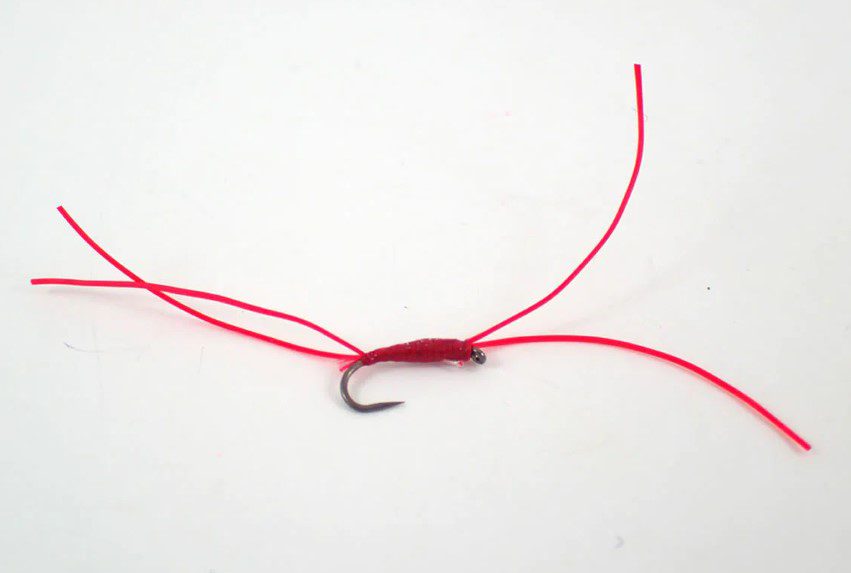
This is a super effective fly that despite its name is an attractor not an imitative fly. This fly can be fished static under a strike indicator or pulled at any depth. Similar to Northern Spider flies which tend to have more ‘legs’ and translucent beads on the shank of the hook.
Making the ‘legs’ kick usually produces the best results, retrieve using sharp strips (tugs) followed by short pauses.
Real bloodworms do not move in this way, but inhabit protective burrows from which they extend their bodies only to feed on deposited detritus and microalgae from the surrounding sediment. When they sense the chemical cues of predatory fish (Kairomones) they dig deeper burrows. (Reference Hölker, F., and Stief, P. 2005. Adaptive behaviour of chironomid larvae (Chironomus riparius) in response to chemical stimuli from predators and resource density. Behav. Ecol. Sociobiol. 58(3): 256–263.)
9) Diawl Bach
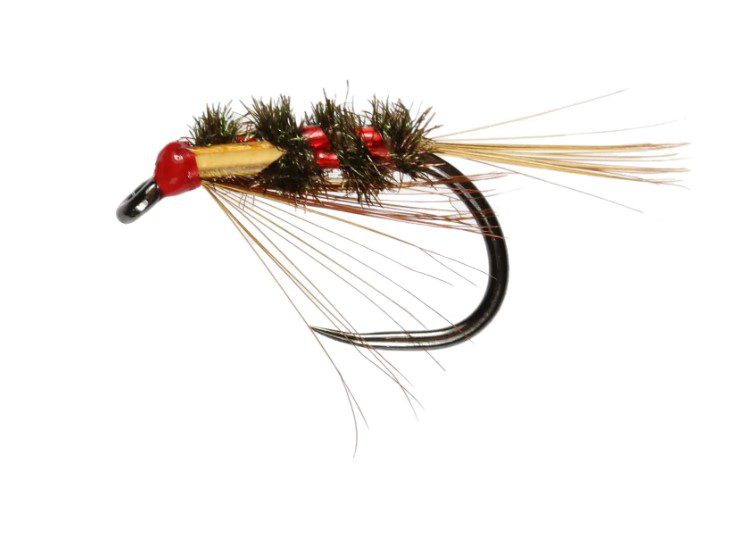
Another effective ‘suggestive’ imitative fly, it means ‘Little Devil’ in Welsh. Often described as imitating a midge pupa it looks more like an Blue Winged Olive or similar upwinged fly nymph as these and the Diawl Bach flies both have tail filaments (Cerci).
10) Flexi Worm
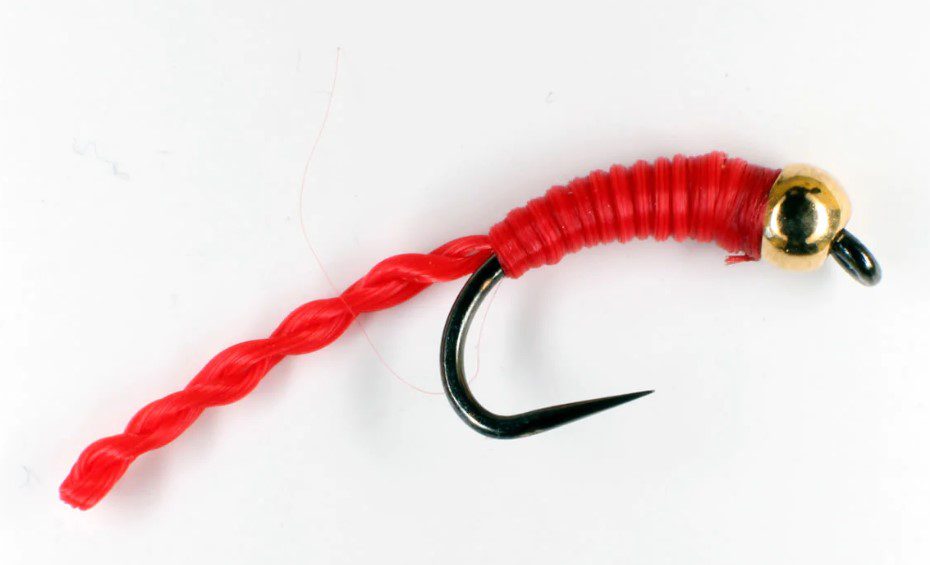
This is another worm shaped attractor, weighted with a bead head to sink faster for targeting fish deeper in the water. When fishing subsurface, try positioning your fly at the level of the trout or just above them. They don’t like to change depth much in order to chase prey.

